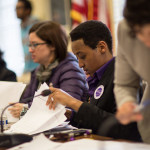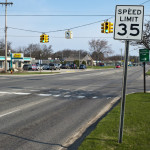[box]
Friends –
The first half of 2015 has been quite the ride for smart growth in the DC region. Thanks to the generous contributions and involvement of supporters like you, we’ve won a number of victories, including the green light for the Purple Line and DC streetcar, and approval of the new, walkable Seven Corners plan in Fairfax.
But we also know that we have our work cut out for us:
- Metro is facing serious fiscal and operational challenges that our region must address
- Despite the popularity and success of great walkable neighborhoods, many suburban roads are still designed solely to move cars through at high speeds
- The price of housing in our region continues to soar – a byproduct of our success, but something that could drag down thousands of families if we don’t work for better solutions.
Keep reading to see what you’ve helped us accomplish so far in 2015, and please stay involved as we continue moving forward together.
Sincerely,
Stewart Schwartz
Executive Director
Jump to: Purple Line | StreetsCamp | DC streetcar | I-66 | Inclusionary zoning in DC | Safer street design in Prince George’s | Homes at Takoma Metro station | Mixed-use investment in Seven Corners | Metro
[/box]
Our constant drumbeat made it challenging for Governor Hogan to say “no” to the Purple Line
It took a massive team effort, but we saved the Purple Line! When newly-elected Governor Hogan signaled he might cancel this long-sought light rail project, we rallied with grassroots supporters and partnered with both the business community and elected officials to make the case for the Purple Line.
We commissioned a national study to document the economic benefits of light rail investments, sent action alerts to grassroots supporters, talked to the media, and worked with our partners to organize a huge “Transit Night” rally in Annapolis in March. In June, Governor Hogan announced he would go ahead with the project.
We’re thrilled to see the project move forward, but are watching to ensure the funding deal is sealed and that the Governor’s cost-cutting proposals don’t compromise the reliability of service.
[clear][/box]
We turned a great idea into the inaugural StreetsCamp
[pretty] [/pretty]
[/pretty]
Our team had an idea: What kind of momentum could we build if we brought together advocates, community members and government planners to share ideas and knowledge about how to make our neighborhoods better?
We attracted over 100 enthusiastic participants on a beautiful Saturday in June – yes a Saturday — to the inaugural StreetsCamp. Participants swapped ideas and skills in breakout sessions on topics including transit, pedestrian and bicycle facilities, affordable housing, communications, and more.
To bring together as many smart, engaged people as possible, we partnered with Arlington’s Mobility Lab, WMATA, All Walks DC, Greater Greater Washington, Safe Routes to School, and our host venue, the Georgetown University Urban Planning program.
We were so inspired to see both long-time advocates and the new generation of urbanists join us. StreetsCamp’s success is definitely a sign that our movement is strong and growing. We’re looking forward to hosting StreetsCamp again next year![clear][/box]
Hundreds of emails from our supporters showed the Bowser administration that residents don’t want to give up on the DC Streetcar
[pretty]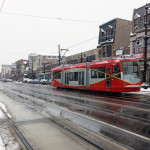 [/pretty]
[/pretty]
Yes, the planning and design process for DC’s first streetcar line in two generations was less than ideal.
But we talked to fellow advocates and national experts, considered the value of the streetcar for community revitalization, and looked at improvements planned for the next phase, then decided that the District should open the project’s first phase along H Street.
We met with the new District Department of Transportation (DDOT) Director Leif Dormsjo and then organized over 275 emails to Mayor Bowser in support of the streetcar and dedicated transit lanes for buses and streetcars on city streets.
Following our campaign and a report by an expert panel at the American Public Transportation Association, Mayor Bowser decided to move forward with the streetcar. DDOT is working through a technical checklist to get to an opening date. DDOT also responded with a study of improvements for bus service on 16th Street NW, including the potential for dedicated lanes.
[clear][/box]
Yes, I-66 needs fixing, but we need the right solution
[pretty] [/pretty]
[/pretty]
Fixing I-66 is a complex challenge. We are deeply immersed in the issue: we’ve made recommendations to the McAuliffe administration, mobilized emails from our members, hosted a major public forum that brought civic associations and non-profit advocates together to ask the hard questions, and called attention to community and environmental impacts.
The Virginia Department of Transportation (VDOT) wants to move forward with a $2 to $3 billion high-occupancy toll (HOT) lanes project outside the Beltway in both directions, with express bus service and reserved right-of-way for future Metro, and with the toll facility either publicly- or privately-controlled.
Inside the Beltway, VDOT wants to convert the road to HOT lanes in both directions, but only during the peak commute hours, maintaining public ownership to ensure revenues that can go to transit in the corridor. It’s unclear if they will also decide to continue HOV-2 or go to HOV-3 for the corridor.
We agree that I-66 urgently needs fixing, and we support VDOT’s inside-the-Beltway approach. But VDOT never studied a transit and smart growth alternative for outside-the-Beltway that would have included Metro, VRE, express bus, transit-oriented centers and rural land conservation — an approach which would reduce the growth in long-distance driving commutes. If we don’t win this, we will certainly continue to seek significant funding for transit service in the corridor as part of any HOT lanes deal.[clear][/box]
Our win-win solution to create more housing – and more affordable housing – in DC
[pretty]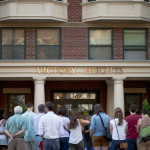 [/pretty]
[/pretty]
To help make sure people of all incomes can afford to live in DC, we’ve made a strong push in 2015 to strengthen DC’s Inclusionary Zoning (IZ) law so it can help more DC families. Under current IZ law, most new residential buildings must reserve 8-10% of the units as permanently affordable for residents making less than a certain income. In exchange, builders win too. They receive a density bonus, so that they can build more market-rate units in their building overall.
Today, the program isn’t helping as many very-low income families as it could. We’d like to fix that by adjusting the balance of low- and very-low-income units that the IZ law requires, and at the same time, increasing the density bonus to better reflect that new balance.
With our DC allies, we launched a campaign this year to do just that. We helped to win a unanimous resolution of the DC Council, and convinced the DC Zoning Commission, which has the ultimate say on the issue, to formally take up the matter. We have been talking to local developers, affordable housing partners, and government staff on how to craft changes to the program. We’ll be hard at work between now and when the Zoning Commission takes up the matter this November.
[clear][/box]
Thanks to our advocacy, a new bill could soon make street design in Prince George’s a lot safer
Prince George’s, like many jurisdictions, has outdated street design requirements that result in roads that are too wide, with speed limits that are too high and difficult crossings that place everyone at greater risk. These kinds of roads are also bad for business at a time when people and companies seek walkable, urban places.
Our campaign with our allies to update the standards is working on multiple fronts. To get the conversation going, we hosted a community forum on June 24th with Karina Ricks of the highly-regarded planning firm Nelson\Nygaard. Our policy team is working closely with members of the Prince George’s County Council to change the law, and we look forward to having positive news to report before the year is out!
[clear][/box]
Here’s why and how we support new homes at Takoma Metro station
[pretty]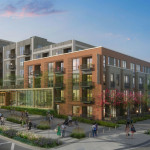 [/pretty]
[/pretty]
Building homes at the doorstep of the Takoma Metro Station is the environmentally sustainable thing to do. More and more people want to live near Metro. where they can drive less or not even own a car, cutting air pollution and greenhouse gas emissions. But winning approval of new housing near Metro is often difficult and time-consuming — pushing prices ever higher.
We’ve reviewed and helped to enhance the proposed ~200-home development at Takoma Metro, communicated to our members about the benefits, convened a local happy hour that allowed for a dialogue between those on all sides of the issue, launched a petition drive, and organized supporters to speak out in favor at the WMATA hearing and vote this spring. The project will go before the DC Historic Preservation Review Board and the DC Zoning Commission, where the public will have additional opportunity to offer input on the design and other issues. [clear][/box]
The case for mixed-use investment in Seven Corners – If not here, then where?
[pretty]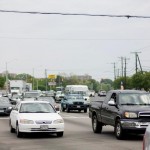 [/pretty]
[/pretty]
Once-new and booming parts of Fairfax like Seven Corners are showing their age. If we don’t encourage new investment in these older areas, companies, young people, and the middle class will go elsewhere. At the same time, converting to mixed-use transit-oriented centers will mean less driving and traffic compared to standard suburban development.
So we were proud to rally support though grassroots emails, blogging, and formal testimony as the Fairfax Board of Supervisors passed a plan in July for revitalizing Seven Corners and creating a great, walkable place where people will really want to be – instead of just traveling through.
The only problem is that the plan does not go far enough in providing new and replacement housing for low-income families in Seven Corners. We believe the tools, strategies and funding sources should have been identified in the plan. They weren’t. But as a result of the push by CSG and our partners, the county is promising to review and update its affordable housing strategies, and we’ll continue to pursue the issue.[clear][/box]
Fare hikes, service cuts, 8-car trains, and funding: Metro’s kept us busy this year
[pretty] [/pretty]
[/pretty]
2015 has not been an easy year for Metro and its riders. We engaged on a number of fronts to support a better Metro, including campaigning for the funding the system needs from local, state and federal government.
When WMATA proposed fare hikes and service cuts earlier this year, we swung into action, alerting Coalition for Smarter Growth supporters like you, and generating over 300 emails to the WMATA Board and local elected officials. The emails, and our testimony, helped convince the Board to drop the fare increases and most of the service cuts.
Since then we’ve pressed officials to identify new sources of funding, to commit to the funding required for 8-car trains, more buses and other capacity improvements, and to hire a new General Manager who is an experienced manager and leader, not just a finance expert.
In view of the latest news this week about Metro management problems that led to the most recent derailment, expect a further update from us in the coming week.
[clear][/box]


